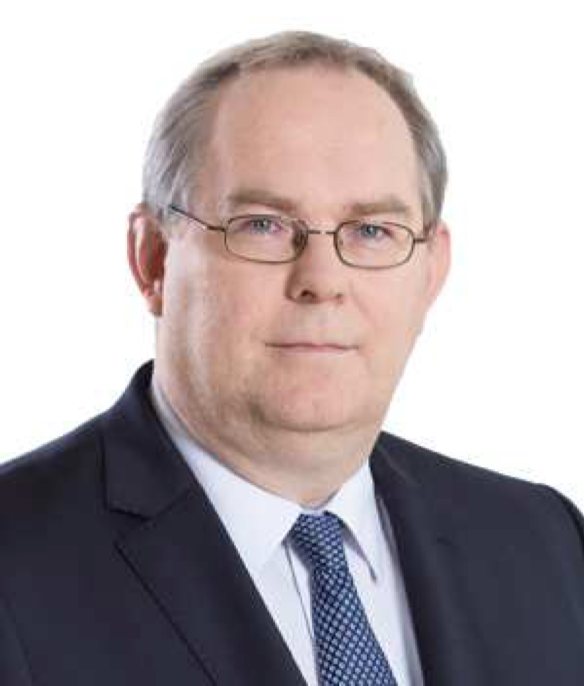The upward trajectory of rates on line will continue at the January 1st 2022 reinsurance renewals, including European accounts hit by losses this year, according to Sven Althoff, executive board member at Hannover Re.
 “While the barriers to entry for P&C are relatively low, it is a cyclical business,” he told Artemis as renewal discussions got underway during the virtual Monte Carlo Rendez-Vous de Septembre 2021.
“While the barriers to entry for P&C are relatively low, it is a cyclical business,” he told Artemis as renewal discussions got underway during the virtual Monte Carlo Rendez-Vous de Septembre 2021.
“The industry is very competitive but it is also very disciplined at the same time, because stakeholders have to deliver on profitability criteria, and that’s exactly what we’ve been seeing over the past three years.”
The continued hardening market is a “natural reaction” to the continuing low interest rate environment and recent loss experience, he said. Because of this, rates will continue to harden regardless of the influx of new capacity over the past 12 months.
“What we’ve experienced for the last 24 months is not a typical hard market situation where you have significant increases of rates because of very tight capacities,” said Althoff. “Outside a few areas, like maybe D&O or cyber, you actually have more than enough capacity to meet the demand for both placements.”
“That was the situation before the capital raises and start ups,” he added. “So the additional capital has not significantly changed the landscape.”
The upward cycle is a sign of underwriters’ continued discipline, he thought. “The reason why we are nonetheless seeing rate increases and improvements in terms and conditions is driven by macroeconomic factors, such as low interest rates and the loss experience over the last five years. The improvement is a robust technical reaction to those developments.”
The reaction is also being seen from the perspective of more stringent terms and conditions in both the reinsurance and underlying market. Althoff noted that insurers had introduced exclusions around unmodelled exposures, such as silent cyber and pandemic.
“The insurance market has scrutinised how they want to adjust their risk-reward relationship over the last two to three years,” he said. “Of course we have price increases, but at the same time wordings have been adjusted in many lines.”
He thinks pandemic coverage will become available again in the future, but as with cyber, this will need to be on an affirmative basis due to the potential for systemic losses.
“COVID needs to be fully understood in terms of losses and we need to get to a point where the overall situation is fully under control, before pandemic can be covered in the future.”
Althoff anticipates that European and US accounts which have been affected by major losses so far in 2021, including Hurricane Ida and the floods in Western Europe, will experience additional pricing corrections on top of the broader increase in rates on line.
“Going forward, we see strong reasons why there should be continued positive momentum on pricing and terms and conditions for both insurance and reinsurance business,” he said, “similar to what we’ve experienced to the last 36 months.”
“We do expect that losses, as they materialise, will be taken into account either in particular lines of business or particular regions.”
The European floods and other extreme weather events in 2021, including Winter Storm Uri and wildfires in various parts of the world, have again focused attention on the impact of secondary perils and whether or not such risks are being properly modelled and priced.
“What does climate change do to the appearance of catastrophe events outside of the ‘normal’ earthquake and hurricane activities – this is a topic which is being discussed in the industry right now,” said Althoff.
“Are the cat models fully taking it into account and do we get the right price for the exposures we’re taking in? It is one of the reasons why we are optimistic about future rate increases, particularly for natural catastrophe business.”
Looking at buying patterns, he noted that cedants were showing an increased appetite for parametric solutions, which he sees as a complement to traditional capacity.
“In the field of parametric, the market is gaining some good momentum and our own parametric practice has gained significantly more momentum over the last 24 months compared to the years before that. So it’s a more accepted way of placing coverage these days.”
Meanwhile, convergence between collateralised and traditional reinsurance market is now a fact of life, although he noted that collateralised markets have struggled with longer tail classes of business and the opportunity this offers to write more diversified portfolios.
“We are working with collateralised markets by offering fronting solutions for the business, so from our point of view we’ve been partnering with them for a long time now,” said Althoff.
“They are particularly successful in areas and regions where the traditional reinsurers are not fully in a position to satisfy demands from the customer base, and they are a welcome addition to the traditional capital by offering their product, so it’s a complement.”
Read all of our interviews with ILS market and reinsurance sector professionals here.
 View all of our Artemis Live video interviews and subscribe to our podcast.
View all of our Artemis Live video interviews and subscribe to our podcast.
All of our Artemis Live insurance-linked securities (ILS), catastrophe bonds and reinsurance video content and video interviews can be accessed online.
Our Artemis Live podcast can be subscribed to using the typical podcast services providers, including Apple, Google, Spotify and more.































